Astro Pi: Mission Update 4
Just over a week ago now we closed the secondary school phase of the Astro Pi competition after a one week extension to the deadline. Students from all over the UK have uploaded their code hoping that British ESA Astronaut Tim Peake will run it on the ISS later this year!
Last week folks from the leading UK Space companies, the UK Space Agency and ESERO UK met with us at Pi Towers in Cambridge to do the judging. We used the actual flight Astro Pi units to test run the submitted code. You can see one of them on the table in the picture below (look closely!):
Secondary school judging in progress! @astro_timpeake @esa @spacegovuk pic.twitter.com/laPS88A5IL
— Astro Pi (@Astro_Pi) July 7, 2015
The standard of entries was incredibly high – we were blown away by how clever some of them were!
Doug Liddle of SSTL said:
“We are delighted that the competition has reached so many school children and we hope that this inspires them to continue coding and look to Space for great career opportunities”
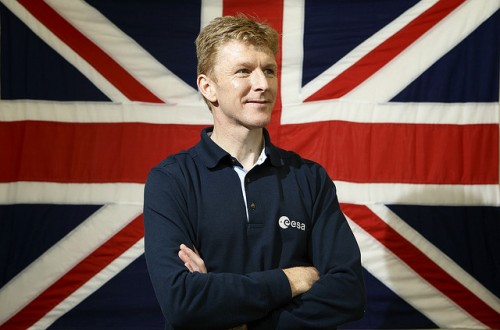
British ESA Astronaut Tim Peake – photo provided by UK Space Agency under CC BY-ND
Jeremy Curtis, Head of Education at the UK Space Agency, said:
“We’re incredibly impressed with the exciting and innovative Astro Pi proposals we’ve received and look forward to seeing them in action aboard the International Space Station.
Not only will these students be learning incredibly useful coding skills, but will get the chance to translate those skills into real experiments that will take place in the unique environment of space.”
When Tim Peake flies to the ISS in December he will have the two Astro Pis in his personal cargo allowance. He’ll also have ten specially prepared SD cards which will contain the winning applications. Time is booked into his operations schedule to deploy the Astro Pis and set the code running and afterwards he will recover any output files created. These will then be returned to their respective owners and made available online for everyone to see.
Code was received for all secondary school key stages and we even have several from key stage 2 primary schools. These were judged along with the key stage 3 entries. So without further ado, here comes a breakdown of who won and what their code does:
Each of these programs have been assigned an operational code name that will be used when talking about them over the space to ground radio.
Ops name: FLAGS
- School: Thirsk School
- Team name: Space-Byrds
- Key stage: 3
- Teacher: Dan Aldred
- The judges had a lot of fun with this. Their program uses telemetry data provided by NORAD along with the Real Time Clock on the Astro Pi to computationally predict the location of the ISS (so it doesn’t need to be online). It then works out what country’s territory the ISS is above, and shows its flag on the LED matrix, along with a short phrase in the local language.
Ops name: MISSION CONTROL
- School: Cottenham Village College
- Team name: Kieran Wand
- Key stage: 3
- Teacher: Christopher Butcher
- Kieran’s program is an environmental system monitor that could be used to cross check the ISS’s own life support system. It continually measures the temperature, pressure and humidity, and displays these in a cycling, split-screen display. It has the ability to raise alarms if these measurements move outside of acceptable parameters. We were especially impressed that code had been written to compensate for thermal transfer between the Pi CPU and Astro Pi sensors.
Andy Powell of the Knowledge Transfer Network said:
“All of the judges were impressed by the quality of work and the effort that had gone into the winning KS3 projects and they produced useful, well thought through and entertaining results”
Ops name: TREES
- School: Westminster School
- Team name: EnviroPi
- Key stage: 4 (and equivalent)
- Teacher: Sam Page
- This entry will be run in the cupola module of the ISS with the Astro Pi NoIR camera pointing out of the window. The aim is to take pictures of the ground and to later analyse them using false colour image processing. This will produce a Normalised Differentiated Vegetation Index (NDVI) for each image which is a measure of plant health. They have one piece of code which will run on the ISS to capture the images and another that will run on the ground after the mission to post process and analyse the images captured. They even tested their code by going up in a light aircraft to take pictures of the ground!
Ops name: REACTION GAMES
- School: Lincoln UTC
- Team name: Team Terminal
- Key stage: 4 (and equivalent)
- Teacher: Mark Hall
- These students have made a whole suite of reaction games, complete with a nice little menu system to let the user select them. The games also record response times, with the eventual goal being to investigate how crew reaction time changes over the course of a long-term space flight. This entry caused all work to cease during the judging for about half an hour!
Lincoln UTC have also won the prize for the best overall submission in the Secondary School completion. This earns them a photograph of their school taken from space by an Airbus or SSTL satellite. Go and make a giant space invader please!
Ops name: RADIATION
- School: Magdalen College School
- Team name: Arthur, Alexander and Kiran
- Key stage: 5 (and equivalent)
- Teacher: Dr Jesse Petersen
- This team have successfully made a radiation detector using the Raspberry Pi camera module, the possibility of which was hinted at during our Astro Pi animation video from a few months ago. The camera lens is blanked off to prevent light from getting in, but this still allows high-energy space radiation to get through. Due to the design of the camera, the sensor sees the impacts of these particles as tiny specks of light. The code then uses OpenCV to measure the intensity of these specks and produces an overall measurement of the level of radiation happening.
What blew us away was that they had taken their Astro Pi and camera module along to the Rutherford Appleton Laboratory and fired a neutron cannon at it to test it was working!
The code can even compensate for dead pixels in the camera sensor. I am wondering if they killed some pixels with the neutron cannon, and then had to add that code out of necessity? Brilliant.
These winning programs will be joined on the ISS by the winners of the Primary School Competition which closed in April:
Ops name: MINECRAFT
- School: Cumnor House Girl’s School
- Team name: Hannah Belshaw
- Key stage: 2
- Teacher: Peter Kelly
- Hannah’s entry logs data from the Astro Pi sensors, and visualises it later using structures in a Minecraft world. So columns of blocks are used to represent environmental measurements, and a giant blocky model of the ISS itself (that moves) is used to represent movement and orientation. The code was written, under Hannah’s guidance, by Martin O’Hanlon who runs Stuff About Code. The data logging program that will run on the ISS produces a CSV file that can be consumed later by the visualisation code to play back what happened when Tim Peake was running it in space. The code is already online here.
A super creative entry "SpaceCRAFT" teaser for us all! By @martinohanlon #AstroPi pic.twitter.com/8ofkpl72I9
— Astro Pi (@Astro_Pi) June 30, 2015
Ops name: SWEATY ASTRONAUT
- School: Cranmere Primary School
- Team name: Cranmere Code Club
- Key stage: 2
- Teacher: Richard Hayler
- Although they were entitled to have their entry coded by us at Raspberry Pi, the kids of the Cranmere Code Club are collectively writing their program themselves. The aim is to try and detect the presence of a crew member by monitoring the environmental sensors of the Astro Pi, particularly humidity. If a fluctuation is detected it will scroll a message asking if someone is there. They even made a Lego replica of the Astro Pi flight case for their testing!
We've built a Lego version of the @astro_pi flight case to make sweaty-astronaut testing as realistic as possible. pic.twitter.com/pYETedeWgn
— Richard Hayler ☀ (@rdhayler) July 9, 2015
Obviously, the main prize for winners is to have your code flown into space and run on the ISS. However, the UK Space companies also offered a number of thematic prizes which were awarded independently of those that have been chosen to fly. Some cross-over with the other winners was expected here.
- Space Sensors
Hannah Belshaw, from Cumnor House Girl’s School with her idea for Minecraft data visualisation. - Space Measurements
Kieran Wand from Cottenham Village College for his ISS environment monitoring system. - Imaging and Remote Sensing
The EnviroPi team from Westminster School with their experiment to measure plant health from space using NDVI images. - Space Radiation
Magdalen College, Oxford with their space radiation detector. - Data Fusion
Nicole Ashworth, from Reading, for her weather reporting system; comparing historical weather data from the UK with the environment on the ISS. - Coding Excellence
Sarah and Charlie Maclean for their multiplayer Labyrinth game.
Pat Norris of CGI said:
“It has been great to see so many schools getting involved in coding and we hope that this competition has inspired the next generation to take up coding, space systems or any of the many other opportunities the UK space sector offers. We were particularly impressed by the way Charlie structured his code, added explanatory comments and used best practice in developing the functionality.”
We’re aiming to have all the code that was submitted to the competition on one of the ten SD cards that will fly. So your code will still fly even if it won’t be scheduled to be run in space. The hope is that, during periods of downtime, Tim may have a look through some of the other entries and run them manually. But this depends on a lot of factors outside our control, and so we can’t promise anything.
But wait, there’s more!
There is still opportunity for all schools to get involved with Astro Pi!
There will be an on-orbit activity during the mission (probably in January or February) that you can all do at the same time as Tim. After the winning programs have all finished, the Astro Pi will enter a phase of flight data recording. Just like the black box on an aircraft.
This will make the Astro Pi continually record everything from all its sensors and save the data into a file that you can get! If you set your Astro Pi up in the same way (the software will be provided by us) then you can compare Tim’s measurements taken in space with yours taken on the ground.
There is then a lot of educational value in looking at the differences and understanding why they occur. For instance, you could look at the accelerometer data to find out when ISS reboosts occurred; or study the magnetometer data to find out how the Earth’s magnetic field changes as they orbit the Earth. A number of free educational resources will be provided that will help you to leverage the value of this exercise.
The general public can also get involved when the Sense HAT goes on general sale in a few weeks time.
Libby Jackson of the UK Space Agency said:
“Although the competition is over, the really exciting part of the project is just beginning. All of the winning entries will get to see their code run in space and thousands more can take part in real life space experiments through the Flight Data phase”

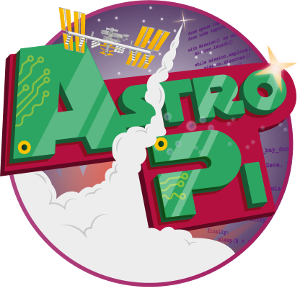
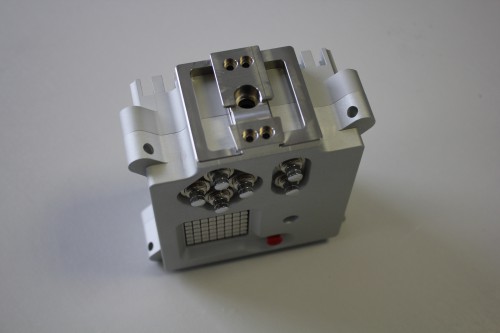
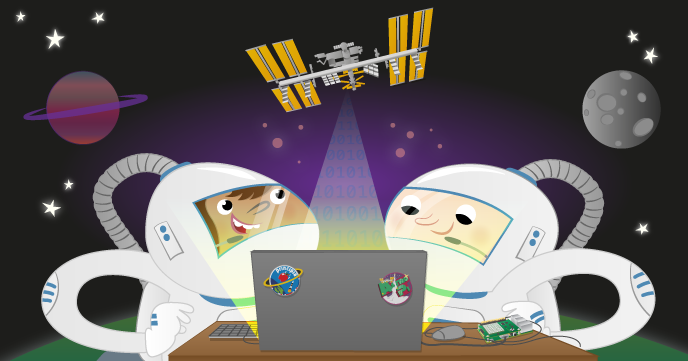
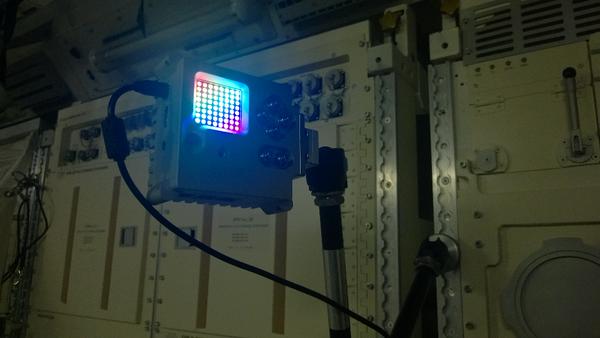
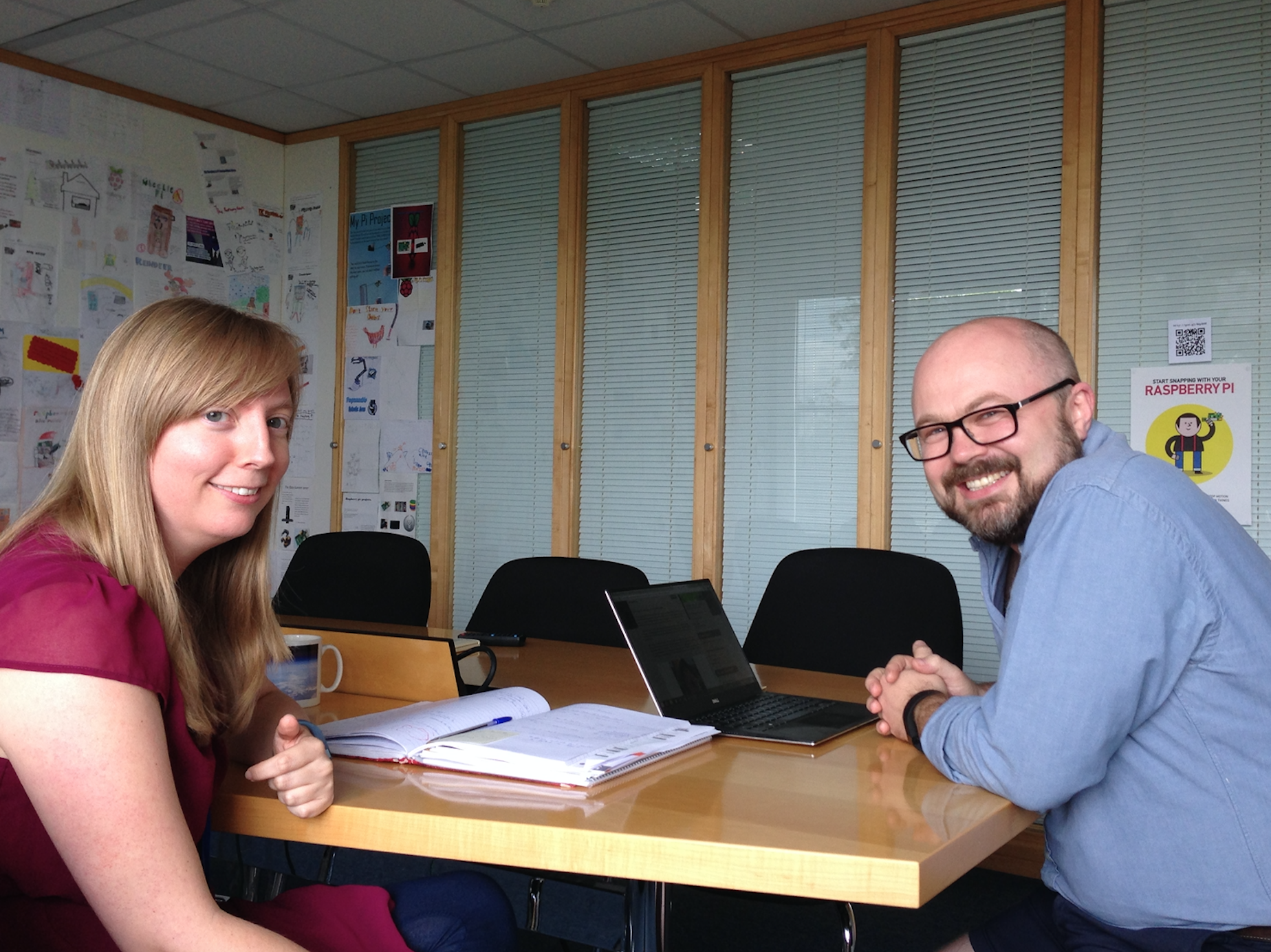
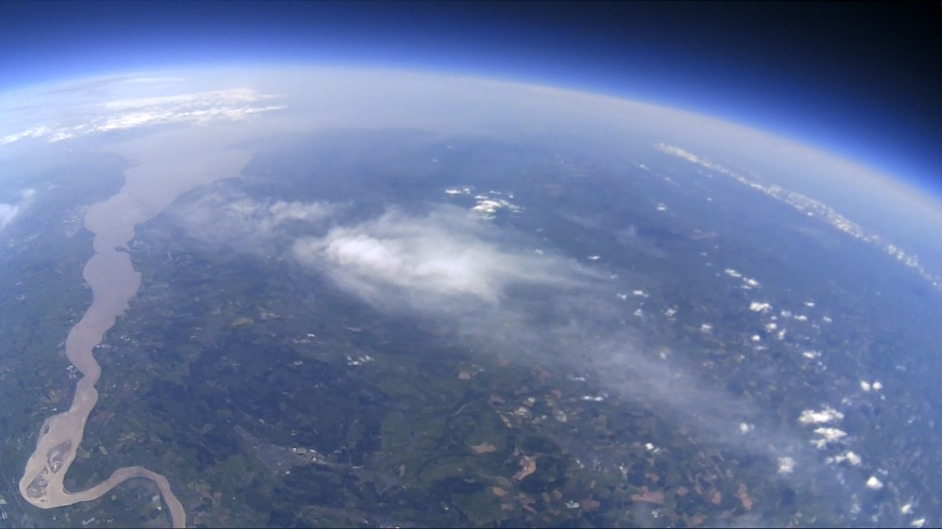
21 comments
The Raspberry Pi Guy
One word: AWESOME!
These entries are so cool! Congratulations to everyone who was involved!
Matt
ThomasS
Hi Liz,
Any idea when we’ll be able to play with the code? :-)
Dan
I will be sharing the code with all , just waiting to see how UK Space want to share / publish it
ThomasS
Thanks. BTW obviously huge congratulations to the winners!
Martin O’Hanlon
Its just brilliant.
So pleased i could be part of it.
Steve Foster
Congratulations to all the winners of stage 2. I was really pleased that 3 of my students won at stage 1, but it was just a bit much for my Science students to progress any further :-(
I particularly love the breadth of ideas represented here, from the use of a covered camera and photosynthesis levels shown in false colour, to something fun like using Minecraft to visualise the ISS. There is such a lot of creativity and know-how out there. Given that one reason for developing the Pi was to encourage the next generation of coders, this seems to have been such a successful enterprise. Well done again to all involved in setting this up :-)
Graham
I think this is a really exciting competition for students, but it is really disappointing that 3 of the 7 winners are independent schools when only 7% of UK children attend such schools. Does this result mean that you got more entries(about 40%)from independent schools or were their entries just better? Whichever this may be, it’s a sad reflection on the state of education in the UK, but is exacerbated when your chances of impressing the judges are greatly increased by access to “light aircraft” and nuclear physics laboratories.
In fact the winning schools in general do not represent the social, cultural or geographical makeup of UK schools. If this is because the entries do not reflect that, then the Raspberry Pi Foundation and partners have to work much harder to include schools and students that do not / can not / will not apply to contests like these. This is not to take away form the hard work of students and teachers and brilliant entries, but it is something that needs addressing. Inclusion does not only apply in the classroom.
ThomasS
I understand your concerns Graham but that’s easier said than done. Independents have better funding and so more resources (including for funding Computing teachers!). I think Picademy is the best idea out there to make sure that state schools can compete with their private counterparts in teaching Computer Science.
Dan
I am from one of winning ‘state’ schools, we do not have access to “light aircraft” and nuclear physics laboratories. I am the only fully qualified Computer Science teacher in a school of around 1096. Yet, my student’s skills and determination enable them to win.
Education and enrichment is about taking opportunities, we were all given the same opportunity to take part. (Some teachers chose not to take it) Coding / computing breaks down barriers. I am immensely proud that my students could achieve so much even without the facilities that private education provides. Together as winners, we have all are equal.
Next term we will team up with Lincoln, Westminster and Oxford and build a warp drive engine, together!
Sue
Fantastic work Dan. You are a very inspirational teacher!
Artur
I agree, although we did not have the supervision of a computer science teacher, our school has an amazingly supportive environment and teachers not only have had careers and extensive experience of the subject they teach, but are encouraged and willing to do a lot more. I think these are the most significant factors for a good school.
A divide between children of those who can afford the (increasing) fees and of those who cannot is not acceptable and will harm our society.
ThomasS
Absolutely. The solution is to fund state education better so that there is little incentive for independent schooling. Also remove unnecessary bureaucracy. A bit off topic now though :-)
David Honess — post author
Hi Graham
I agree we do need to work harder in this area but I’d like to address a couple of your points.
The judging process was fully anonymized. We had print outs of the written description of the projects , their code and only a 15 digit long number was used to identify them. So we had no idea what schools they were from or even the gender of the students involved. We actually followed the BBC’s own code of conduct on competitions, the same way the Blue Peter mission patch competition was done. This then supports the view that entries were judged on their merit alone and yes it may be that entries from independent schools were just better.
We’ve also been in phone contact with the winning teams and it turns out that both the light aircraft flight and the nuclear laboratory test occurred completely opportunistically. So therefore not as a result of the advantage of being an independent school or spending available funds to gain that access.
All schools in the UK were given equal opportunity to enter and, other than willingness and time to dedicate to it, there was no financial barrier at all.
Getting schools to engage is not a trivial issue, it’s the old ‘you can lead the horse to water’ problem. If you’ve got any ideas about how we could improve in this area I’d be glad to discuss them over email. I’m dave at raspberrypi dot org.
Cheers
Michael Horne
Brilliant. Just brilliant. They sound fantastic – congrats to the winners. Also: open invitation to anyone who would like to talk about/present/show their winning entries at the Cambridge Raspberry Jam on 12th September. It’s at the Institute of Astronomy, which is a very appropriate place! :-) Send me an email – mike@recantha.co.uk – just in case I don’t spot it in the comment replies!
Artur
This is incredible news to us! Thank you for creating such amazing opportunities for students around the country.
In fact the camera was already damaged in transport before it went in the beamline! We thought the camera could get just as bad treatment during launch and as you say the radiation up there will knock pixels out the longer it stays.
We’d like to thank Dr. Frost and Dr. Platt at RAL for their immense generosity.
James Hughes
Hi Artur
If I remember correctly, the image processing pipeline in the Raspberry Pi has automatic bad pixel detection and correction. Depending on whether you want that or not you might need a special build of the GPU firmware to disable this correction. It would be interesting to count how fast the pixels get knocked out once in space, and this would be hidden by the bad pixel detection code. There are also other processing stages you may need to disable or change to get best results (denoise for example).
James (Writer of the camera demo apps and ex-Broadcom employee who worked on the camera system)
jdb
James, we’ve thought of that already :]
All of the entries will be vetted, tested and tweaked to cope or null-out various “features” that the software layers insert between the captured data and the data presented to the experiment program.
In the case of the Radiation Detector, I believe the camera has already been set up for exposure/gain such that there’s a maximal chance of detecting a cosmic ray event. If there’s any internal feature that would nerf the settings already specified, then we would disable it or modify the program to work around it.
Tim Richardson
Well done to all the winners! As Mike says, you are all welcome to the September CamJam.
MalMan35
That is so cool! Really smart kids!
Btw. ESA Astronaut Tim Peake WIN run it on the ISS later this year!
did you mean
ESA Astronaut Tim Peake WILL run it on the ISS later this year!
abranco
I have ubuntu mate installed on raspberry 2 and can not install the “sudo apt-get install sense-hat” and “sudo pip install 3.2-pillow” error “is not possible to find the sense-hat package”.
Can anyone help?
Ben Nuttall
You’ve got your words mixed up in the pillow installation command. It should be: